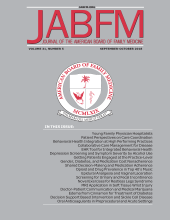To the Editor: Physicians have played an outsider role in the treatment of opioid dependency. We are called upon as the purveyors of authoritative signature when it comes to prescribing the controlled substances that are frequently used to replace illegal sources, and thus we contribute reluctantly to the drug diversion problem. We have been simultaneously prohibited from knowingly prescribing opiate agonist therapy for opioid addiction unless we are employed by one of 1,200 narcotic treatment programs that dispense methadone and levo-alpha acetylmethadol (LAAM). We are held responsible for treating the growing population of needle-use victims who have human immunodeficiency virus infection and hepatitis. We contribute through taxation to the burdensome and expensive systems designed to punish (but rarely rehabilitate) addicts and dealers, although hopeful is the idea of introducing methadone clinics into correctional settings.
Two and one-half million persons have used heroin in this country, and nearly 1 million do so currently. Approximately 1 in 5 are engaged in treatment. In that addictive medicine might be one of the quintessential subspecialties of family practice, given the solid evidence of genetic involvement in dependency disorders and the profound impact that substance abuse has on family function, it follows that the family physician might be an indispensable part of diagnosing and treating addiction in this large population.
A factor contributing to the gap between the problem and the solution (other than inadequate funding) is the stigma created by laws that criminalize the disease of addiction, most notably the Harrison Act of 1914 and the Narcotic Addiction Treatment Act of 1974. There is sound clinical, social, and medical-economic literature to support the integration of addiction treatment into the flow of primary care along with other preventable and treatable chronic illnesses. It was this body of evidence that led to the Drug Addiction Treatment Act of 2000. This legislation paved the way for qualified physicians to prescribe effective and approved medications for opioid dependency. It also allowed addicts to obtain therapy outside the existing restrictive and limited resources. It even allows for addicts to get care from their own physician!
Buprenorphine is a partial opioid agonist with a milligram-to-milligram equivalency to 30 milligrams of morphine. It has been available as a pain medication for years. Because of its high affinity for opioid mu receptors and its long duration of action, buprenorphine was recognized as a potential blocking agent and has been used in Europe as an alternative to methadone. Because of additional pharmacologic benefits (one of which is how hard it is to overdose on), it was approved by the Food and Drug Administration (FDA) in October 2002 for use in the treatment of opioid addiction.
Buprenorphine is currently available in two sublingual forms—Subutex and Suboxone (mixed with naloxone). The latter, if altered and used intravenously, can precipitate an acute opiate withdrawal syndrome in an actively using, opiate-dependent patient. By itself, buprenorphine can also trigger an abstinence syndrome unless it is used after the natural onset of craving, in which case it relieves withdrawal symptoms. Obviously, these medications are tools to be used only by those who know what they are doing. An excellent review article on the use of buprenorphine in office-based opioid dependency treatment was published in the 12 September 2002 edition of The New England Journal of Medicine.
The Drug Addiction Treatment Act and FDA approval of buprenorphine offer great opportunities for family physicians to play dynamic and proactive roles in the treatment of a common disease. We have an opportunity to treat pain and addiction in harmony, not competitively. Collaboration with regulatory agencies (Federation of State Medical Boards and National Association of Boards of Pharmacy) and in-the-trenches clinicians (American Society of Addiction Medicine) has already been a challenge for the federal bureaucrats and scientists (Center for Substance Abuse Treatment). Now is a great opportunity for all of the above to combine efforts with our state health departments and schools of medicine in adopting this new paradigm and avoid the tragic results that followed the release of “hillbilly heroin.” We have an opportunity to draw more addicts into the recovery milieu.
A detailed list of the criteria required for the waiver that allows for use of these medications is available at http://www.buprenorphine.samhsa.gov. Briefly, waivers are granted to licensed physicians who document a minimum of 8 hours of education by an approved trainer. Each physician may treat no more than 30 opioid addict patients at a time. An additional requirement is the capacity to refer to other treatment modalities so that more holistic approaches are used. A list of the certified physicians is also available at the above Web site.
Getting the treatment of opiate addicts out of the closet and into the clinic has been a long-awaited process. Physicians can participate with cautious empowerment in this new arena, and while doing so, they can reduce the suffering of our patients and their communities.







